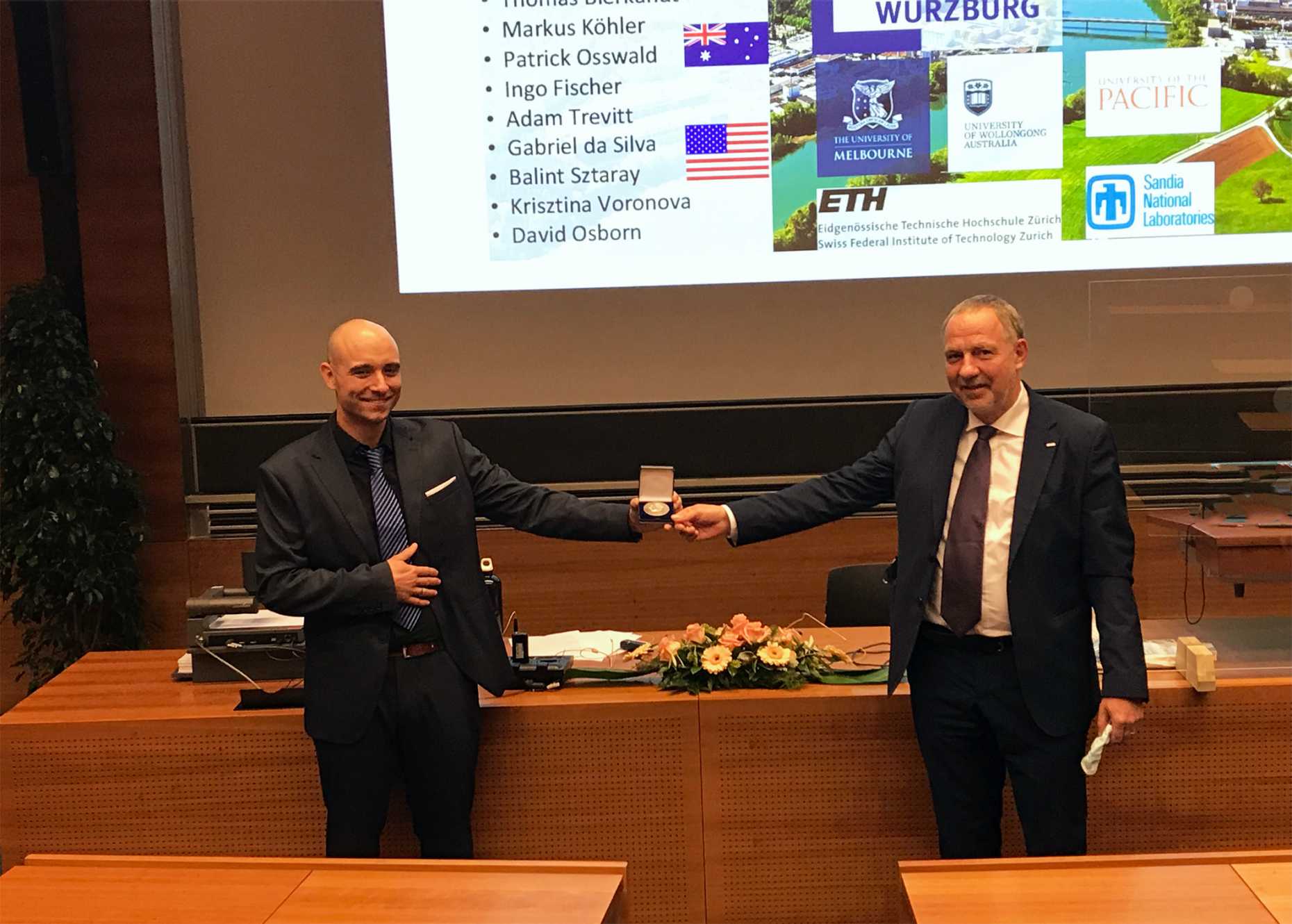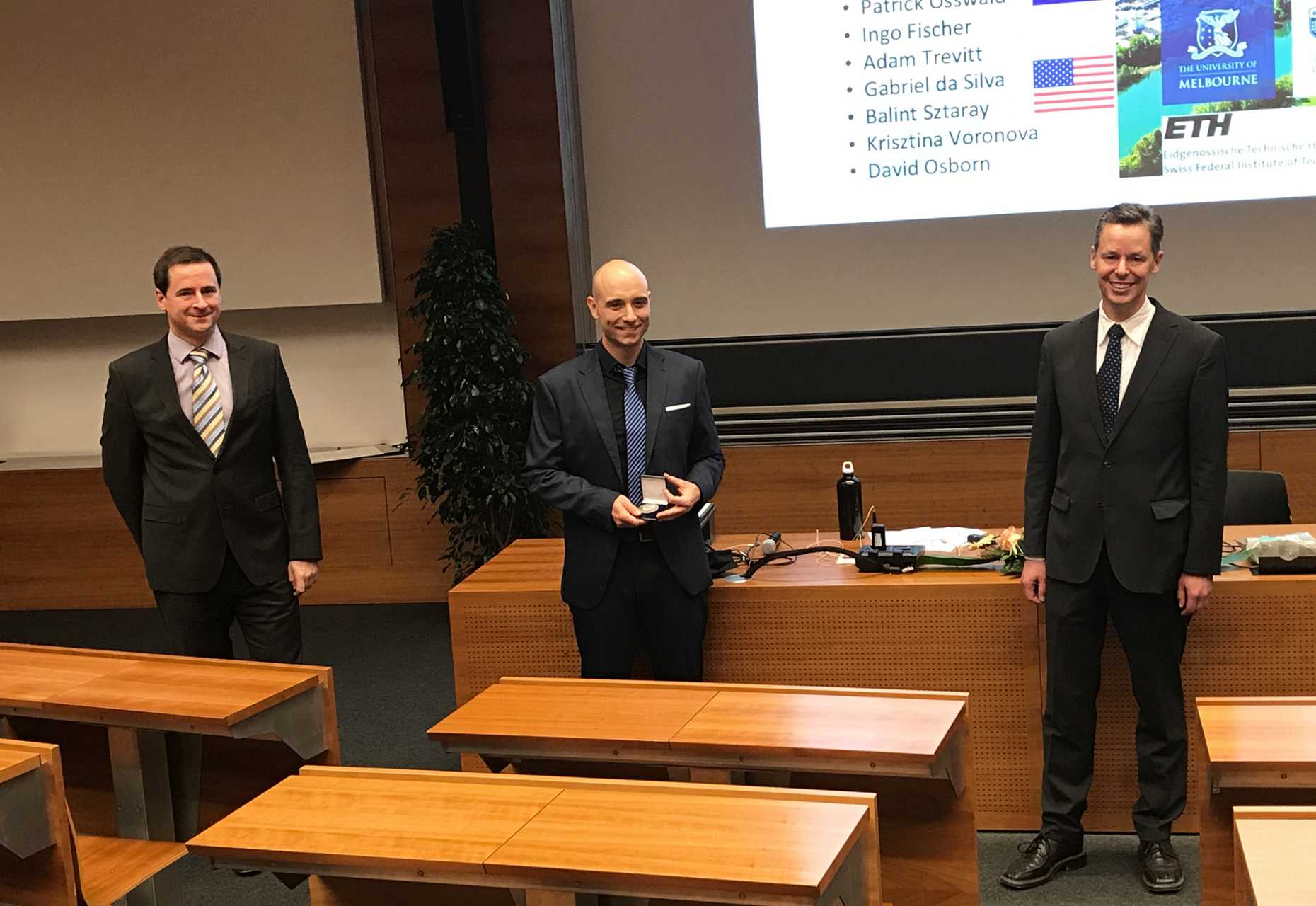Ruzicka Prize 2020 for Patrick Hemberger
- D-CHAB
- Preise
- Awards
Lignin is one of the most common organic compounds in the world. What if this complex substance could be easily converted into sustainable fuel? Patrick Hemberger, scientist at the synchrotron of the Paul Scherrer Institute in Villigen, was the first to find an efficient way to investigate this process in detail. For his research, he has been awarded the 2020 Ruzicka Prize. The video of the Award Ceremony and Award Lecture is now available.

To the Video: Award Ceremony & Award Lecture Ruzicka-Prize 2020
"If you understand the intermediates, you understand the chemistry behind the reactive systems – they are the missing puzzle piece in the whole reaction mechanism,” – that is what Dr. Patrick Hemberger realized quite soon while working as a scientist on the vacuum ultraviolet (VUV) beamline at Paul Scherrer Institute in Villigen. However, standard tools such as gas chromatography have so far failed to detect these intermediates – in other words highly reactive molecules, which are created in the course of a chemical reaction under certain conditions. Hemberger therefore established iPEPICO (Imaging Photoelectron Photoion Coincidence Spectroscopy) as an in-situ analysis instrument. He pioneered this application and succeeded in the isomer-selective detection of highly reactive combustion intermediates or in the revelation of fulvenone as a central reactive intermediate in the catalytic pyrolysis of the lignin component guaiacol. This could help to make the conversion of the CO2-neutral, natural material lignin to fine chemicals and fuels via catalytic fast pyrolysis more economical in the future.
For the elucidation of the pyrolysis mechanism by studying reactive intermediates in heterogeneous catalysis, Dr. Patrick Hemberger is now awarded the Ruzicka Prize 2020 by the Department of Chemistry and Applied Biosciences at ETH Zurich – one of the most important prizes for young scientists in the field of chemistry in Switzerland. In the future he wants to research further processes and intermediates and develop new synchrotron tools for this purpose.
"Receiving the Ruzicka Prize 2020 is a huge honor for me and I’m delighted, that my research is gaining such recognition, even outside PSI and my own research community."Dr. Patrick Hemberger
Patrick Hemberger is originally from Würzburg, Germany. He was trained as a chemical laboratory assistant before beginning his chemistry studies in Würzburg. During his diploma thesis in Professor Ingo Fischer’s group, he investigated the photoionisation of reactive molecules using synchrotron radiation. Hemberger continued to work in this group. In 2011, after only two and a half years, he received his doctorate on spectroscopy and dynamics of reactive intermediates. Shortly afterwards he moved to PSI in Villigen. Since then, he has been working there as a scientist on the vacuum ultraviolet beamline (VUV). He conducts his own research projects and is responsible for development and maintenance of the beamline as well as for the user support. Since 2016, he is principal investigator in several projects and beamline scientist in the reaction dynamics group in the Synchrotron Radiation and Femtochemistry Laboratory. He heads the chemistry laboratory for external users and is very involved in teaching. Patrick Hemberger has so far published 113 papers and received several research grants.

Find a personal portrait of the award winner with interviews and further information on his research on: https://chab.ethz.ch/en/news-and-events/d-chab-news/2020/11/in-search-of-the-last-puzzle-piece.html